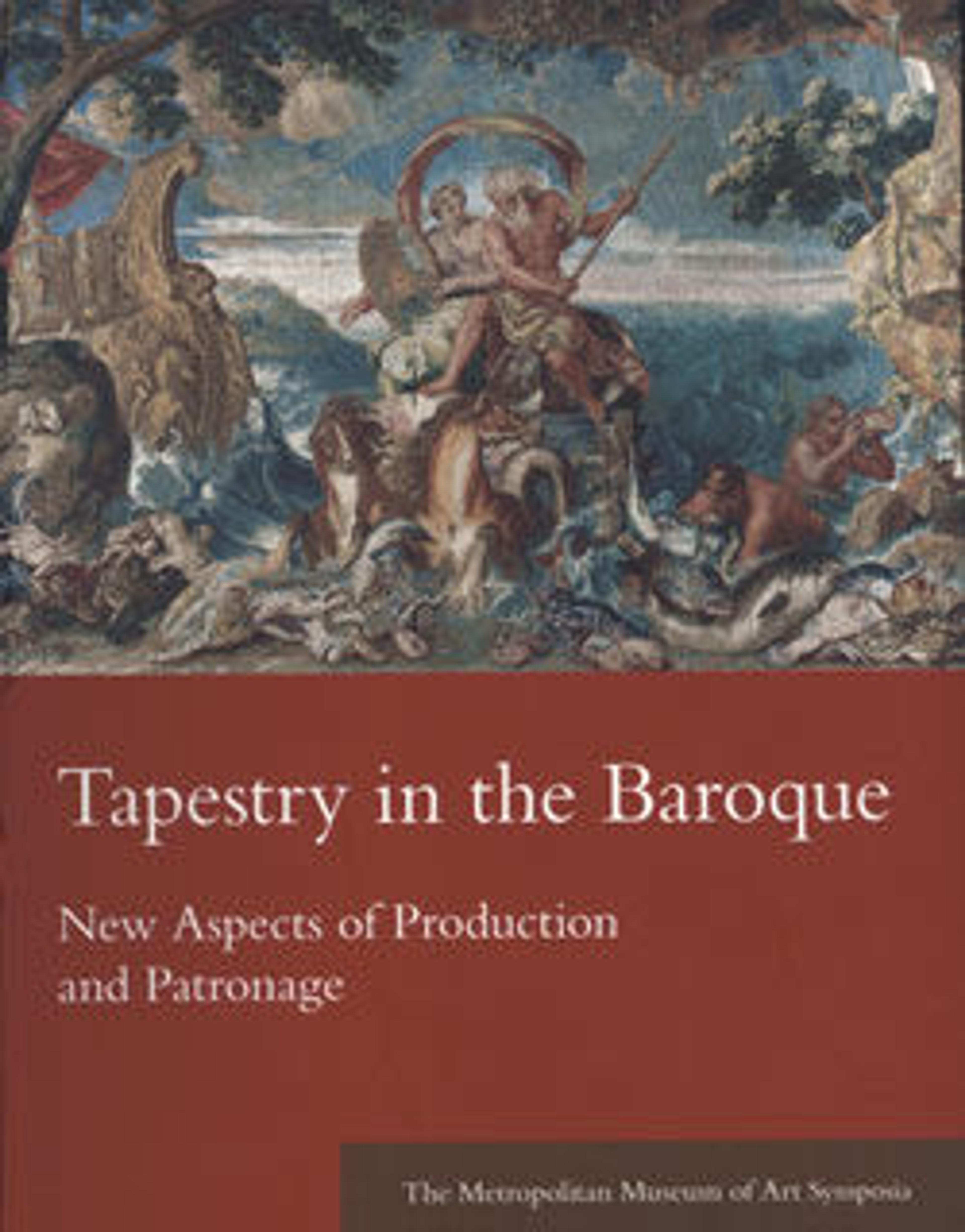The Liberation of Oriane from a set of Amadis of Gaul
This tapestry depicts scenes from Amadis of Gaul, a chivalric romance that enjoyed great popularity in European court circles in the late sixteenth century. Amadis, a knight from Gaul, has fallen in love with Oriane, daughter of the King of England, but she and the "Damsel of Denmark" have been kidnapped by the king's enemy, Arcalaus. Here we see Oriane's rescue. Toward the center of the scene Amadis encounters the army of Arcalaus and defeats each of his soldiers before finally confronting and killing Arcalaus. In the foreground, Amadis and Oriane are re-united.
Woven from a design by Karel van Mander I, the tapestry is a rare example of late sixteenth-century Dutch production. It was made in the Delft workshop of the merchant-weaver Frans Spiering (ca. 1550–1620) who had relocated from Antwerp because of the religious turmoil of the era. The Spiering enterprise enjoyed great success between 1590 and 1620, providing high-quality tapestries to the Protestant courts of northern Europe who were no longer able to buy tapestries from Brussels, the traditional source of high-quality tapestries. Spiering seems to have enjoyed the unusual privilege of being able to use the coveted "BB" symbol of Brussels' production, even though he was not working in that town.
Spiering's tapestries had a high silk content, rendering them especially vulnerable to light damage. This tapestry is remarkable for the intensity and richness of its color.
Woven from a design by Karel van Mander I, the tapestry is a rare example of late sixteenth-century Dutch production. It was made in the Delft workshop of the merchant-weaver Frans Spiering (ca. 1550–1620) who had relocated from Antwerp because of the religious turmoil of the era. The Spiering enterprise enjoyed great success between 1590 and 1620, providing high-quality tapestries to the Protestant courts of northern Europe who were no longer able to buy tapestries from Brussels, the traditional source of high-quality tapestries. Spiering seems to have enjoyed the unusual privilege of being able to use the coveted "BB" symbol of Brussels' production, even though he was not working in that town.
Spiering's tapestries had a high silk content, rendering them especially vulnerable to light damage. This tapestry is remarkable for the intensity and richness of its color.
Artwork Details
- Title: The Liberation of Oriane from a set of Amadis of Gaul
- Designer: Designed by Karel van Mander I (Netherlandish, Meulebeke 1548–1606 Amsterdam)
- Maker: Weaving workshop directed by Frans Spiering (Flemish, 1551–ca. 1630)
- Date: ca. 1590–95
- Culture: Dutch, Delft
- Medium: Wool and silk (8-9 warps per cm)
- Dimensions: Overall (confirmed): H. 139 x W. 159 1/4 in. (353.1 x 404.5 cm)
- Classification: Textiles-Tapestries
- Credit Line: Purchase, Walter and Leonore Annenberg and The Annenberg Foundation Fund, 2006
- Object Number: 2006.36
- Curatorial Department: European Sculpture and Decorative Arts
More Artwork
Research Resources
The Met provides unparalleled resources for research and welcomes an international community of students and scholars. The Met's Open Access API is where creators and researchers can connect to the The Met collection. Open Access data and public domain images are available for unrestricted commercial and noncommercial use without permission or fee.
To request images under copyright and other restrictions, please use this Image Request form.
Feedback
We continue to research and examine historical and cultural context for objects in The Met collection. If you have comments or questions about this object record, please contact us using the form below. The Museum looks forward to receiving your comments.
